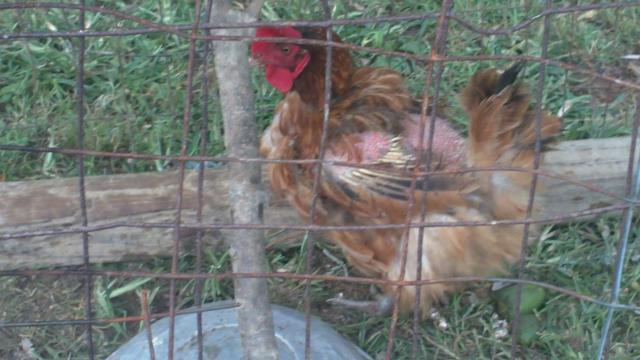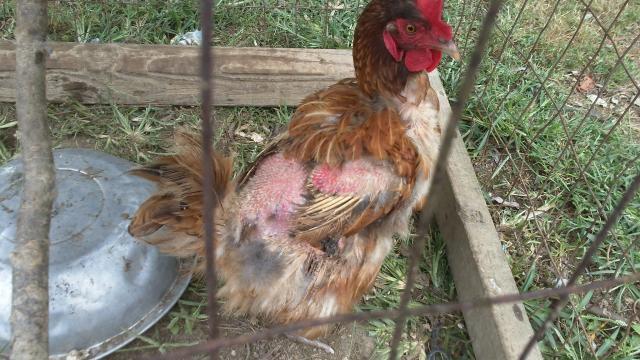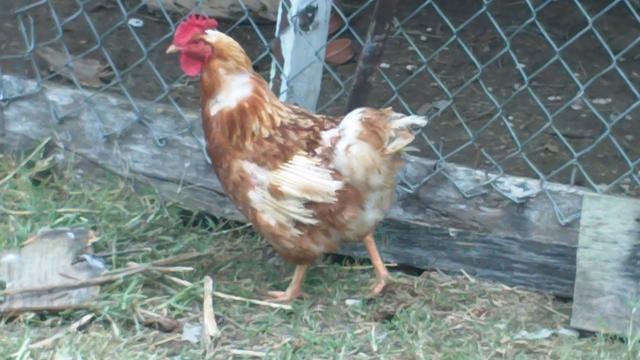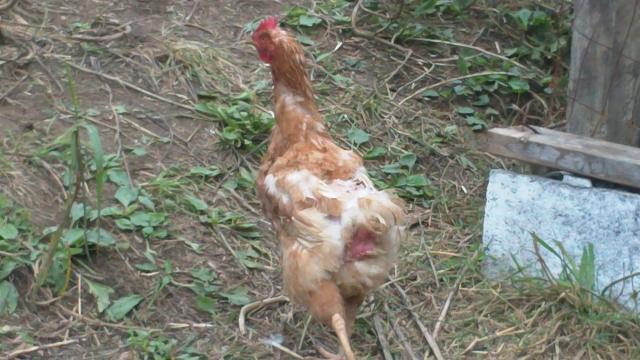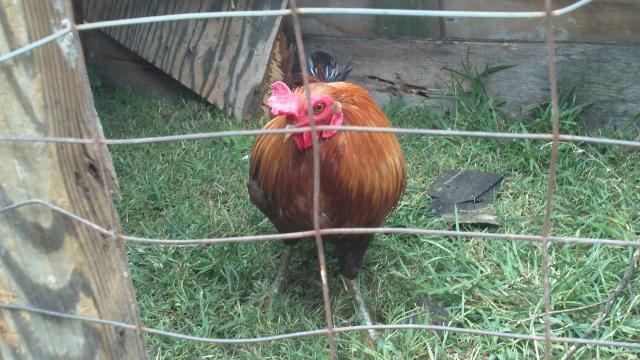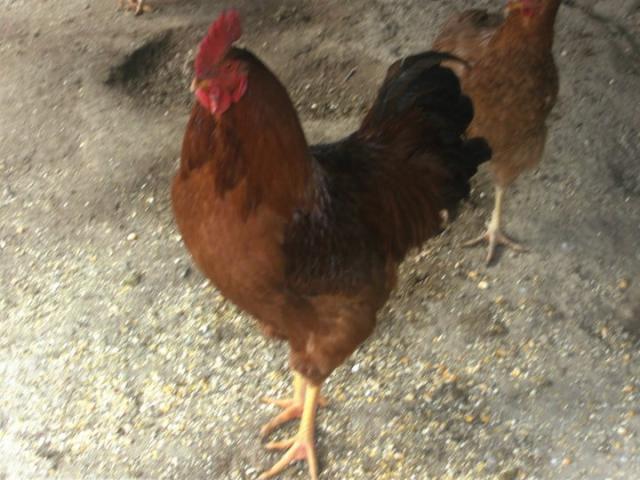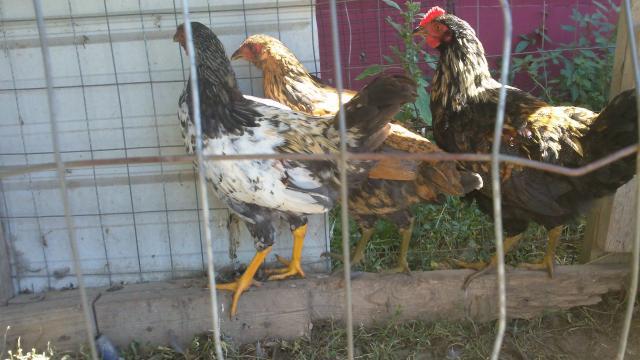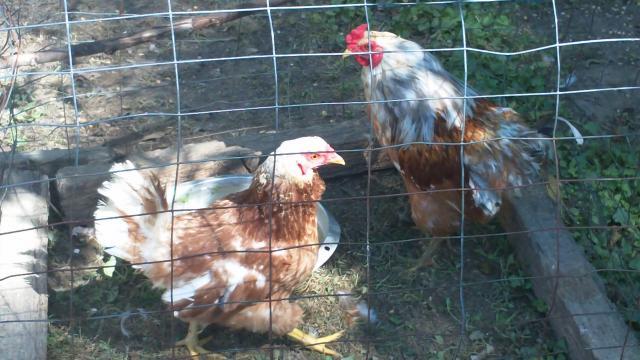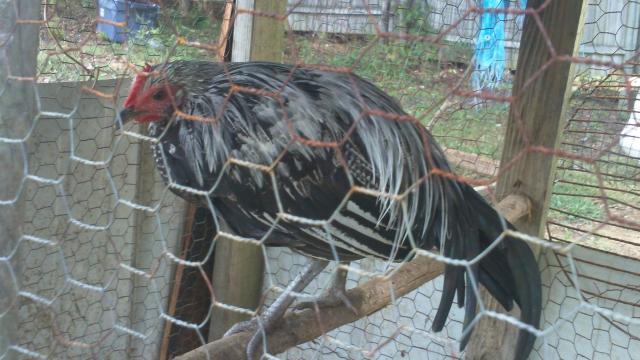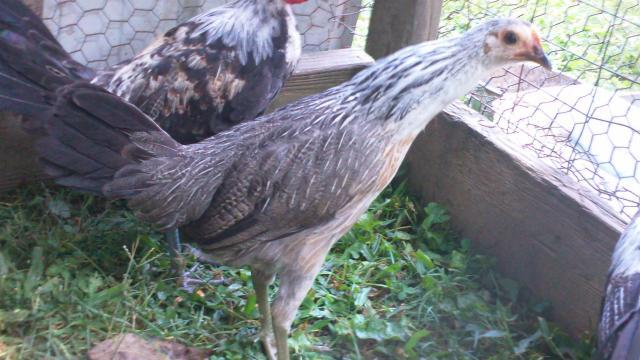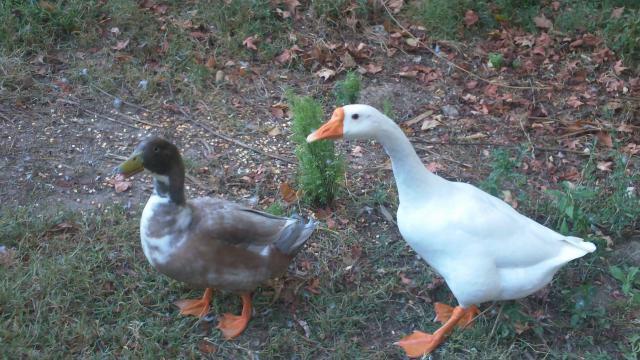I am have raised, hatched, and showed chickens for the last fifteen years. In the last five years, I have went from a reputable breeder of Show Quality American Gamefowl into rescuing abused and neglected chickens. I have twenty birds total and 14 of them are rescues that I have fallen in love with. So much so that I bred them and produced 3 chicks I decided to keep. I now have a very big problem.
I have a flock of six red-sex link hens that I have had for seven months. When I went to the lady's home, I was so upset by the living conditions that I paid her eight dollars a hen to bring home six. I now have five. The sixth hen was a victim of a neighbors dog. I have no idea of the ages of these hens. Based on my experience they are all at least three and some older than five. They are sweet girls and I love them dearly. This is why I need the BYC's expert help!
These girls came here missing many feathers around their vents and some on their wings/backs. I tried everything from dusting them to antibiotics and injectable penicillin. They all did very well for awhile but some have still not re-grown their feathers. There are no pimples or open wounds. I know all about over-breeding and the parasitic factors involved here (mites, lice, etc.). My fear is disease. ANY ADVICE WOULD HELP. They show no signs of any type of parasite and my other chickens are doing well.
I feed them a high protein diet. They are free-ranged during the day. I separate the rooster and allow him to breed only twice a week, in the breeding season. I also spray their coop out with medicated water to kill pests but prevent them from entering it until it dries. I medicate each one with an Aloe Vera spray to reduce any itch so they won't pick as the new feathers grow in (Very FEW). They have very brittle wing feathers so I avoid handling them too much. I even give two of the sicker hens penicillin. What MORE can be done? I even have tried soluble antibiotics.
I need to know if age could be the biggest problem here or if it is something that I am NOT doing or if their is more I can do. Being from the mountains of Appalachia I am not familiar with chickens that are this old. Most don't more than three years and find their way to a pot. I have to save these hens because I rescued them from a poor life and I want nothing more than to give them a happy, healthy life until they die. Every chicken deserves to be taken care of properly, no matter if they are raised for meat. I will never eat these girls, I will keep them until they die of natural causes. I will raise chicks from them to replace them when they quit laying.
Please help me if you can. I am trying to do the right thing and I need some help!
A picture of the worst case: she is worse now....
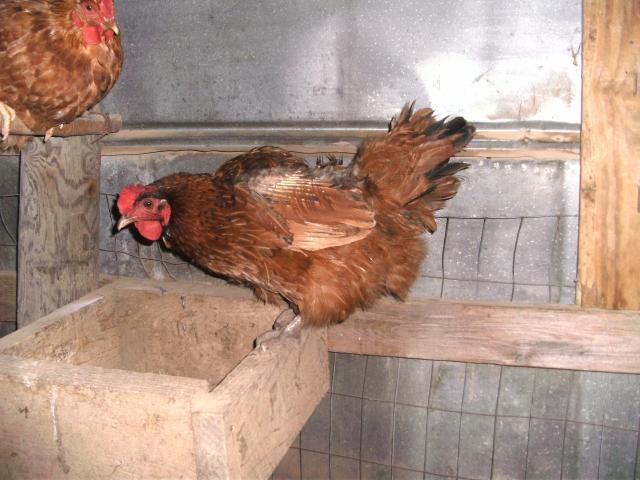
Thanks for any help you offer!
Tim in KY
I have a flock of six red-sex link hens that I have had for seven months. When I went to the lady's home, I was so upset by the living conditions that I paid her eight dollars a hen to bring home six. I now have five. The sixth hen was a victim of a neighbors dog. I have no idea of the ages of these hens. Based on my experience they are all at least three and some older than five. They are sweet girls and I love them dearly. This is why I need the BYC's expert help!
These girls came here missing many feathers around their vents and some on their wings/backs. I tried everything from dusting them to antibiotics and injectable penicillin. They all did very well for awhile but some have still not re-grown their feathers. There are no pimples or open wounds. I know all about over-breeding and the parasitic factors involved here (mites, lice, etc.). My fear is disease. ANY ADVICE WOULD HELP. They show no signs of any type of parasite and my other chickens are doing well.
I feed them a high protein diet. They are free-ranged during the day. I separate the rooster and allow him to breed only twice a week, in the breeding season. I also spray their coop out with medicated water to kill pests but prevent them from entering it until it dries. I medicate each one with an Aloe Vera spray to reduce any itch so they won't pick as the new feathers grow in (Very FEW). They have very brittle wing feathers so I avoid handling them too much. I even give two of the sicker hens penicillin. What MORE can be done? I even have tried soluble antibiotics.
I need to know if age could be the biggest problem here or if it is something that I am NOT doing or if their is more I can do. Being from the mountains of Appalachia I am not familiar with chickens that are this old. Most don't more than three years and find their way to a pot. I have to save these hens because I rescued them from a poor life and I want nothing more than to give them a happy, healthy life until they die. Every chicken deserves to be taken care of properly, no matter if they are raised for meat. I will never eat these girls, I will keep them until they die of natural causes. I will raise chicks from them to replace them when they quit laying.
Please help me if you can. I am trying to do the right thing and I need some help!
A picture of the worst case: she is worse now....

Thanks for any help you offer!
Tim in KY

